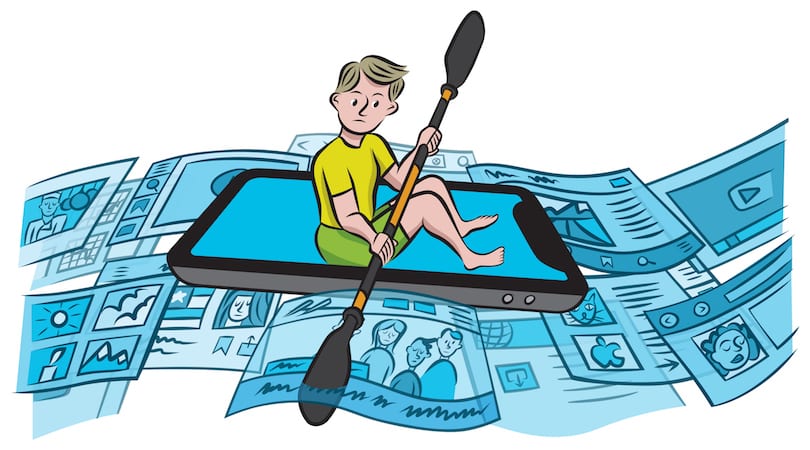In today’s environment, media literacy is more important than ever. But the sparse research on the topic shows us that kids really struggle with identifying legitimate sources.
This Stanford study found that 82 percent of middle school students couldn’t distinguish between a news story and one labeled as sponsored content. Another 80 percent assumed that an unsourced photo was proof of a misleading claim.
So how can teachers help? The following ideas can help students learn to recognize bias and evaluate their sources more carefully.
1. Talk about what fake news is.
Put your students in groups and ask them to discuss the following questions:
- What is fake news?
- What do you think some signs of fake news are?
- Have you ever believed fake news? When? Why?
- What happens if we can’t tell real news from fake news?
Just because the terms “fake news” and “news bias” are all over the news media doesn’t mean that your students know what they mean or why they matter. We like this Merriam-Webster article that provides a historical definition as well.
2. Give your students fake information to fact-check.
Show your students the website All About Explorers: Christopher Columbus and ask them to locate information about him. Students may find that information on this site does not match up with what they know to be true. (Was Columbus really born in 1951, like the site says?) In this case, the information is actually false. Ask your students to discuss the differences between false information and biased information.
3. Show your students how to cross-check information.
Instead of relying on their own knowledge, ask students to cross-check the information they found with a more reliable website. Put them in groups to discuss:
- How do you know when a source is reliable? What are some ways to verify this? (For example, research the publication or author, examine the link authority, look for exaggerated vocabulary or claims, watch out for Photoshopping or editing of images, etc.)
- Can you believe everything a reliable source writes? Why or why not?
- Could a reliable source also be biased?
Have students Google whether a source is considered to have a liberal or conservative bias. Show them how to choose from more than one source to maintain a balanced perspective or to showcase differences of opinion.
4. Teach students the vocabulary.
Discussing bias can be a challenging experience for students who have not had to defend their opinions before. Many students may be surprised to realize that they disagree with the bias of their friends and family after learning more about a topic.
Showing them how to use the vocabulary assigned to these issues will help them feel more confident in their stance.
- Bias: A judgment based on a personal point of view.
- Claim: A statement put forth as true in an argument or on an issue.
- Exaggeration: An overstatement or stretching of the truth.
- Reason: A general statement that offers support for a claim.
- Evidence: Facts, statistics, and examples used to support reasons.
Teach students about liberal, conservative, and middle-of-the-road perspectives. You can find differences on websites like Student News Daily. Just be sure to curate the information for your students, depending on their age.
If kids understand how different people think and why, they will ask better questions of the information they are evaluating and relying upon.
5. Show your students how the media’s choices affect reader perception.
The choice of which images or words to use or exclude in a news story is an important decision. This decision helps shape the viewer’s or reader’s opinions about an event or person.
Use the following websites to have your students guess the implied bias in headlines and images.
6. Help your students identify different kinds of fake news or bias.
There are many words used to describe fake news. Teach your students to identify them. Send them on a scavenger hunt to find:
- Satire
- Clickbait
- Hyperpartisan news
- Invented news
7. Investigate how biased news has become a business model.
Ask students to create a movie trailer or presentation on the concept that biased news is now an American business model. Remind them to discuss whether or not this has been good for the American public.

